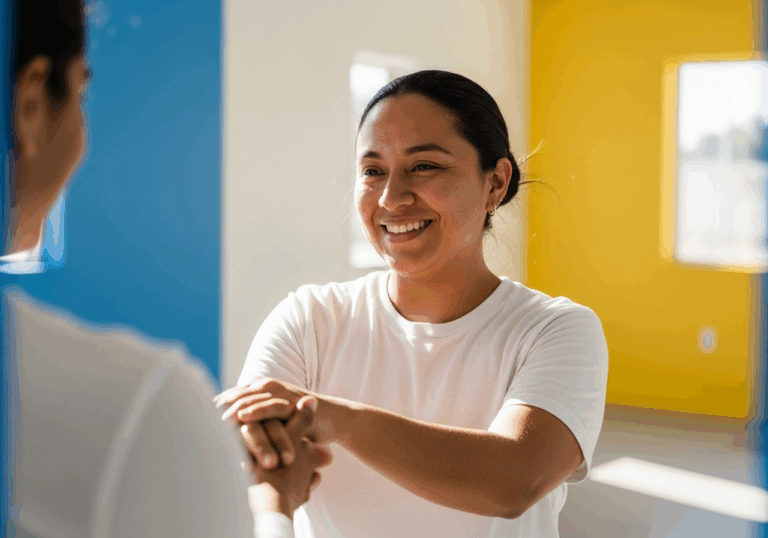Science-Backed Tips
Boost Heart Health by Spending on Others
Weekly prosocial spending can lower blood pressure by ~6 mmHg.
📊 Did you know?
💡 Why It Matters
1️⃣
Lowering diastolic blood pressure by 6 mmHg can significantly reduce the risk of heart disease.
2️⃣
Improved mood and emotional wellbeing through altruistic behaviors can enhance overall quality of life.
3️⃣
Encouraging prosocial spending may offer a cost-effective strategy for managing hypertension in older adults.
✅ Try These Micro-Tips
🎯
Spend $20 weekly on a charitable cause or gift for someone else.
🎯
Engage in a community service activity at least once a month.
🎯
Share a meal with a friend or neighbor once a week.
🎯
Participate in group activities that involve helping others bi-weekly.
📚 The study
This finding is particularly significant as lowering diastolic blood pressure by just 6 mmHg can substantially diminish the risk of heart disease, a leading health concern for older adults.
Moreover, the study highlights the dual benefits of prosocial spending—not only does it contribute to improved cardiovascular health, but it also enhances mood and emotional well-being. By fostering a sense of connection and purpose through giving, individuals can experience a boost in their overall quality of life.
Encouraging older adults to engage in prosocial spending may serve as a cost-effective strategy for managing hypertension, offering a simple yet powerful way to improve both heart health and emotional wellness.
This research underscores the importance of community and altruism, suggesting that by investing in others, we can also invest in our own health and happiness.
❓ Frequently Asked Questions ❓
Learn more
How does spending money on others affect blood pressure?
Spending money on others can lower diastolic blood pressure by approximately 6 mmHg in hypertensive older adults. This effect is attributed to the cardiovascular benefits associated with altruistic behaviors.
What is the duration of the study on prosocial spending?
The study examined the effects of prosocial spending over a period of three weeks. Participants were randomly assigned to spend money on others or themselves during this time.
What is the recommended amount to spend on others weekly?
It is suggested to spend around $20 weekly on a charitable cause or a gift for someone else. This small investment can lead to significant health benefits.
How does altruistic spending improve mood?
Altruistic spending can enhance mood by providing emotional satisfaction and a sense of purpose. This improvement in mood is linked to the physical health gains from lower blood pressure.
What are some activities that promote prosocial spending?
Engaging in community service activities at least once a month can promote prosocial spending. Additionally, sharing meals with friends or participating in group activities that help others can also be beneficial.
What impact does lowering diastolic blood pressure have on health?
Lowering diastolic blood pressure by 6 mmHg can significantly reduce the risk of heart disease. This reduction is crucial for improving overall cardiovascular health.
Can prosocial spending be a strategy for managing hypertension?
Encouraging prosocial spending may offer a cost-effective strategy for managing hypertension in older adults. This approach not only helps with blood pressure but also enhances emotional well-being.
What were the key results of the study on spending money on others?
The study found that spending on others resulted in approximately 5–7 mmHg lower systolic and diastolic blood pressure compared to spending on oneself. These results highlight the health benefits of altruistic behaviors.
How often should one engage in prosocial activities?
It is recommended to participate in group activities that involve helping others bi-weekly. Regular engagement in such activities can contribute to improved emotional and physical health.
What is the overall significance of the study’s findings?
The study underscores the importance of altruistic spending in improving both cardiovascular health and emotional well-being. It suggests that simple acts of kindness can lead to substantial health benefits for older adults.





